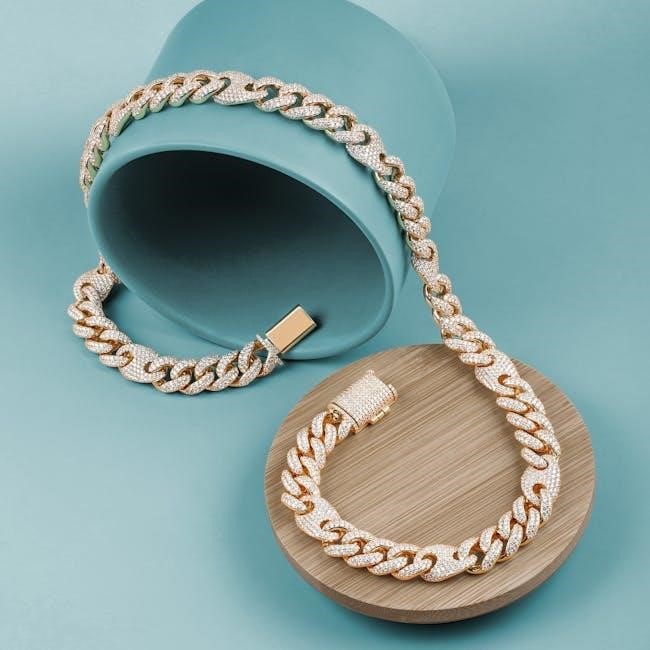
DRZ400 Cam Chain Guide: A Comprehensive Guide
The DRZ400 cam chain guide is a crucial component within the engine, ensuring smooth and efficient operation. It prevents excessive wear on the cam chain itself, maintaining proper timing. Replacing a worn cam chain guide promptly is essential for preventing engine damage and maintaining peak performance.
The DRZ400’s engine relies on a cam chain system for precise valve timing, a critical factor in its performance. The cam chain connects the crankshaft to the camshafts, synchronizing their rotation to ensure valves open and close at the correct moments. Within this system, the cam chain guide plays a vital role, preventing excessive wear and maintaining chain tension.
The guide minimizes vibrations and noise generated by the chain as it travels around the sprockets. Without a functioning guide, the cam chain can slap against engine components, leading to damage. The guide’s material and design are crucial for durability and resistance to the constant friction it endures. Regular inspection and timely replacement of the cam chain guide are essential for the longevity and optimal functioning of the DRZ400 engine.
Understanding this system helps owners diagnose potential issues and perform necessary maintenance. Ignoring a worn cam chain guide can lead to costly repairs, including cam chain replacement or even engine rebuilds. This guide aims to provide comprehensive information about the DRZ400 cam chain guide system.
Understanding the Function of the Cam Chain Guide
The cam chain guide in a DRZ400 engine serves a critical purpose: ensuring the smooth, controlled operation of the cam chain. It acts as a buffer, preventing the chain from vibrating excessively and slapping against other engine parts. This is essential for maintaining accurate valve timing and preventing premature wear on the chain itself and surrounding components.
Imagine the cam chain constantly moving at high speeds within the engine. Without the guide, this movement would create significant noise and vibration, potentially leading to inaccurate valve operation and reduced engine performance. The guide’s strategically placed contact points provide stability, directing the chain’s path and absorbing energy that would otherwise be transferred to other parts.
Furthermore, the cam chain guide helps maintain proper tension on the chain. As the chain stretches over time due to normal wear, the guide provides support, preventing it from skipping teeth on the sprockets. By understanding the function of the cam chain guide, DRZ400 owners can better appreciate its importance and proactively address any potential issues.
Identifying Symptoms of a Worn Cam Chain Guide
Recognizing the signs of a worn cam chain guide on your DRZ400 is crucial for preventing more serious engine problems. One of the first symptoms is often an unusual rattling noise coming from the engine, particularly noticeable at idle or low RPMs. This rattling is caused by the cam chain slapping against other components due to the guide’s diminished effectiveness.
Another indication is a decrease in engine performance. As the cam chain loses its proper tension and alignment, the engine’s timing can be affected, leading to reduced power and responsiveness. You might notice difficulty starting the engine or a general lack of acceleration.
Visual inspection can also reveal a worn cam chain guide. If accessible, examine the guide for signs of wear, such as grooves, cracks, or missing pieces. Excessive wear on the guide’s surface indicates that it is no longer providing adequate support to the chain. Furthermore, if you’re already replacing the cam chain, inspect the guide as a matter of routine maintenance. Addressing these symptoms early can save you from more extensive and costly repairs down the road.
Tools and Materials Needed for Replacement
Replacing the cam chain guide on your DRZ400 requires a specific set of tools and materials to ensure a successful and efficient repair. First and foremost, you’ll need a new cam chain guide designed for your specific DRZ400 model year. Ensure it is a high-quality replacement to guarantee longevity and proper function.
Essential tools include a socket set with various sizes, including those necessary for removing the cam cover, clutch cover, and any other relevant components. A torque wrench is crucial for tightening bolts to the manufacturer’s specifications, preventing damage to the engine. You’ll also need a set of Allen wrenches, screwdrivers (both Phillips and flathead), and possibly a specialized tool for holding the crankshaft or camshafts in place during the process.
Additional materials include fresh engine oil, a new gasket for the cam cover and clutch cover, and thread locker to secure certain bolts. Cleaning supplies, such as degreaser and rags, are helpful for cleaning parts during reassembly. Having a manual cam chain tensioner can be a good upgrade as well. Finally, a well-lit workspace and a parts tray will aid in organization and prevent lost components.

Step-by-Step Guide to Replacing the Cam Chain Guide
Replacing the cam chain guide on a DRZ400 requires careful attention to detail. Begin by gathering all necessary tools and materials. Ensure the engine is cool before starting. First, remove the seat, fuel tank, and any other components obstructing access to the cam cover. Next, carefully disconnect any electrical connections and hoses attached to the engine.
Proceed to remove the cam cover, taking note of the bolt pattern for proper reinstallation. Once the cam cover is off, inspect the camshafts and timing marks. Rotate the engine to align the timing marks according to the service manual. With the timing marks aligned, carefully remove the camshafts, ensuring not to drop any shims or components.
Next, drain the engine oil and remove the clutch cover on the right side of the engine. This provides access to the lower cam chain guide. Carefully remove the old cam chain guide, noting its orientation. Install the new cam chain guide, ensuring it is properly seated and secured. Reassemble the engine in reverse order, paying close attention to torque specifications. Finally, refill the engine with fresh oil and verify the timing.
Removing the Cam Cover and Cams

The removal of the cam cover and camshafts is a critical step in replacing the cam chain guide on a DRZ400. Start by ensuring the engine is cool to prevent burns. Disconnect any electrical connections or hoses attached to the cam cover. Carefully remove the bolts securing the cam cover, noting their locations for proper reinstallation. Gently lift the cam cover, being mindful of any gaskets or seals that may be attached.
With the cam cover removed, you’ll have access to the camshafts. Before removing the camshafts, it’s essential to align the engine’s timing marks. Rotate the crankshaft until the marks on the camshaft sprockets align with the corresponding marks on the cylinder head. This ensures the engine is at Top Dead Center (TDC) on the compression stroke.
Loosen the cam chain tensioner to relieve pressure on the cam chain. Carefully remove the camshaft bearing caps, again noting their orientation. Gently lift the camshafts from the cylinder head, ensuring the cam chain remains engaged with the crankshaft sprocket. Store the camshafts in a safe place, protecting them from damage. Take note of the placement of any shims present.
Draining the Oil and Accessing the Clutch Side
Draining the engine oil is a necessary preliminary step before accessing the clutch side of the DRZ400 engine. This prevents oil spillage and ensures a cleaner working environment during the cam chain guide replacement. Place a drain pan beneath the engine’s drain plug. Remove the drain plug using the appropriate wrench size, allowing the oil to drain completely.

Once the oil has fully drained, reinstall the drain plug with a new crush washer to ensure a proper seal. Tighten the drain plug to the manufacturer’s specified torque. With the oil drained, you can proceed to access the clutch side of the engine. Locate and remove the clutch cover bolts, again noting their positions for correct reinstallation. Gently tap the clutch cover with a rubber mallet to loosen it from the engine case.
Carefully remove the clutch cover, being mindful of any oil residue or gaskets. With the clutch cover removed, you’ll have access to the clutch basket and related components. Depending on the specific procedure you’re following, you may need to remove the clutch basket to gain better access to the cam chain area. Consult your DRZ400 service manual for detailed instructions on clutch basket removal.
Removing the Old Cam Chain Guide
With the clutch side exposed, the next step is to carefully remove the old cam chain guide. The specific method will depend on the guide’s location and how it’s secured. Typically, one guide is located near the cylinder head, accessible after removing the cam cover and cams, while another resides within the engine case, often requiring access from the clutch side.
The guide near the cylinder head is often held in place by a bolt or screw. Carefully remove this fastener, taking note of any washers or shims. Once the fastener is removed, gently wiggle the guide to loosen it. If it’s stuck, avoid excessive force, as this could damage the surrounding components.
The guide within the engine case might be secured by a fastener accessible from the clutch side or may be held in place by the head. Identify the retaining mechanism and carefully remove it. With the retaining mechanism removed, gently maneuver the old guide out of its position. Pay attention to the orientation of the guide as you remove it. This will help with the installation of the new guide. Inspect the old guide for signs of wear or damage to understand the failure mode.
Installing the New Cam Chain Guide
With the old cam chain guide removed, the next step is to install the new one. Before installation, lubricate the new guide with engine oil to reduce friction during initial operation. Ensure the new guide is the correct part for your DRZ400 model year to avoid fitment issues.
Position the new cam chain guide in the same orientation as the old one. Carefully maneuver it into place, ensuring it seats properly within its designated location. If the guide is held in place by a fastener, apply a thread locker to the fastener’s threads to prevent it from loosening due to vibration. Tighten the fastener to the manufacturer’s specified torque. Avoid over-tightening, as this could damage the guide or the surrounding components.
If the guide is held in place by the head, ensure the head gasket is in good condition before reassembling. Once the guide is secured, double-check its position to ensure it’s properly aligned. Rotate the engine manually to verify that the cam chain moves smoothly against the new guide. If you encounter any resistance, re-inspect the installation to identify and resolve any issues. Proper installation is crucial for optimal cam chain performance.

Adjusting the Cam Chain Tensioner (Manual vs. Automatic)
After installing the new cam chain guide, adjusting the cam chain tensioner is crucial. The DRZ400 can utilize either an automatic cam chain tensioner (ACCT) or a manual cam chain tensioner (MCCT), each requiring a different adjustment approach. An ACCT adjusts tension automatically using a spring-loaded mechanism. While convenient, they are prone to failure and can cause premature cam chain wear.
An MCCT offers more precise control. To adjust an MCCT, loosen the lock nut and gently turn the adjuster screw until slight resistance is felt against the cam chain. Avoid over-tightening, as this can damage the chain or guides. Once the proper tension is achieved, tighten the lock nut securely. Regularly check and readjust MCCTs, especially after initial installation and during routine maintenance.
Proper cam chain tension is vital for optimal engine performance and longevity. Too little tension can cause chain slap and timing issues, while excessive tension can accelerate wear on the chain, guides, and other engine components. Choosing between an ACCT and MCCT depends on riding style and maintenance preferences.
Common Mistakes to Avoid During Installation
Replacing the DRZ400 cam chain guide is a task where attention to detail is crucial. One common mistake is neglecting to properly align the timing marks on the camshafts and crankshaft. This can lead to incorrect valve timing, causing poor performance or engine damage. Always double-check the alignment before reassembling the engine.
Another frequent error is over-tightening bolts, particularly those on the cam cover. Overtightening can strip threads or warp the cover, leading to oil leaks. Use a torque wrench to ensure bolts are tightened to the manufacturer’s specifications. Failing to properly lubricate the new cam chain guide and related components before installation can cause premature wear. Apply engine oil to all moving parts to ensure smooth operation.
Forgetting to replace the cam cover gasket is another oversight. An old, worn gasket can leak, leading to oil loss and potential engine damage. Always use a new gasket when reassembling the cam cover. Rushing through the process can lead to mistakes. Take your time, follow the instructions carefully, and double-check your work.
Maintenance Tips for Prolonging Cam Chain and Guide Life
Extending the lifespan of your DRZ400’s cam chain and guide involves several key maintenance practices. Regularly changing your engine oil is paramount. Clean oil ensures proper lubrication, reducing friction and wear on the cam chain and guide. Follow the manufacturer’s recommended oil change intervals, and use a high-quality oil that meets the DRZ400’s specifications.
Maintaining proper cam chain tension is also crucial. Whether you have a manual or automatic tensioner, ensure it’s functioning correctly. For manual tensioners, periodically check and adjust the tension according to the manufacturer’s guidelines. For automatic tensioners, listen for any unusual rattling sounds, which could indicate a problem.
Avoid aggressive riding habits that put excessive strain on the engine. Frequent high-RPM operation can accelerate wear on the cam chain and guide. Inspect the cam chain and guide periodically for signs of wear, such as excessive slack in the chain or visible damage to the guide. Addressing these issues early can prevent more serious problems down the road. Finally, ensure that the engine’s cooling system is functioning correctly to prevent overheating, which can also contribute to premature wear.